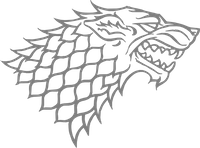Automatic Propagation Reporter
PSK reporter started out as a project to automatically gather reception records of digimode activity and then make those records available in near realtime to interested parties — typically the amateur who initiated the communication. The way that it works is that many amateurs will run a client that will monitor received traffic for callsigns (the pattern 'de callsign callsign') and, when seen, will report this fact. This is of interest to the amateur who transmitted adn they will be able to see where their signal was received. The pattern chosen is typically part of a standard CQ call. The duplicate check is to make sure that the callsign is not corrupted. The rules for protocols like FT8 are different as the callsigns are protected by error correction. You do still need to call CQ in order for your signal to be reported.
JS8 - JS8CALL
JS8Callis software using the JS8 Digital Mode providing weak signal keyboard to keyboard messaging to Radio Amateurs
JS8Callis an experiment to test the feasibility of a digital mode with the robustness of FT8, combined with a messaging and network protocol layer for weak signal communication on HF, using a keyboard messaging style interface. It is not designed for any specific purpose other than connecting amateur radio operators who are operating under weak signal conditions.
I've been experimenting with the JS8 mode for a while and the results and distances achieved with a minimum power of 5-12 Watts are really nice. If you are interested in DX, JS8Call is really a easy way to make a start.
FT8 - WSJT-X
FT8 is one of the many digital modes often referred to as sound card modes (SCM) because they utilize a computer’s sound card to bring in audio from your radio to be processed by software to decode the information embedded in the signal. Conversely, when you want to transmit, the software encodes your message into audio tones that are sent out via your sound card to your radio’s audio or Mic input. For years there have been a variety of these new software modes including Phase-shift keying (PSK31 & PSK 65), Hellschreiber, Olivia, Pactor, etc. and even older hardware-based modes such as RTTY that we now use our computers to encode and decode. FT8 is one of a group of Multiple Frequency-Shift Keying (MFSK) modes that include JT9, JT65 and MSK144 created byJoe Taylor, K1JT and co-developers. FT8 is designed to maximize communication even when signals are very weak (as low as -24dB). This means that even low-powered stations and stations with sub-optimal antennas can make contacts worldwide. With its popularity, quickly working DXCC or WAS with FT8 is easily within reach of almost any station. With FT8, activity is limited to a narrow band of frequencies, so it is ideal for use with loop antennas that require retuning when changing frequency, such as CHAMELEON ANTENNA F-Loop 2.0 Portable HF Antenna (CHA-F-LOOP-2-0). FT8 is also extremely popular on the 6 meter band, so there are many opportunities for long-distance communication even with a Technician Class License. WSJT-X is the most popular software for FT8. This great program is not only free but versions are available for Windows-based PCs and Macintosh OS, Linux (with pre-compiled Debian, Fedora and Raspbian distros). For details on installing and configuring the software, follow the onlineWSJT-X User Guide. Do not ignore the information on making sure your computer’s time is synchronized as this is vital to making contacts! After you install the software, you may also need to configure your radio’s settings.
PSK Automatic Propagation Reporter
